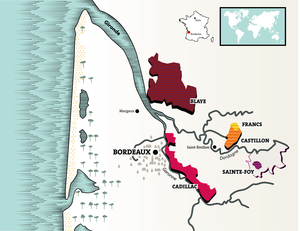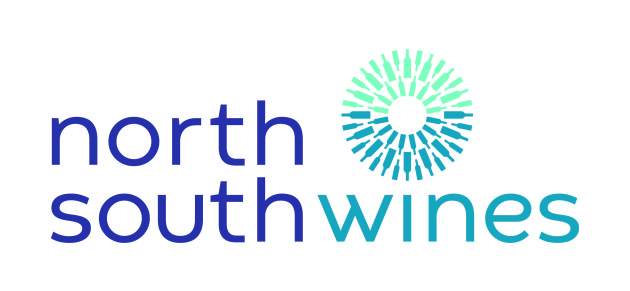
Côtes de Bordeaux: welcome to the epicentre of modern winemaking in Bordeaux
With significant innovation being implemented in wineries and vineyards across five diverse appellations, it’s time to discover Côtes de Bordeaux.
Tucked away next to some of the most famous appellations in the world lies the fourth largest AOC in France, Côtes de Bordeaux. It is a region on the ascent, leading viticultural and vinicultural innovation across Bordeaux.
Created just 12 years ago in 2009, Côtes de Bordeaux is made up of five different sub-appellations spread across the right bank of Bordeaux between the Dordogne and Gironde. It includes Castillon Côtes de Bordeaux, Francs Côtes de Bordeaux, Blaye Côtes de Bordeaux, Cadillac Côtes de Bordeaux and most recently, Sainte-Foy Côtes de Bordeaux which joined the group in 2016. Each appellation shares similarly hilly landscapes, hence the name ‘Côtes.’
Whilst the union of these great regions has created a dynamic and exciting larger area where refreshing whites and delicious sweet wines can be found, Côtes de Bordeaux is predominantly known for its great-value and superb quality modern, fruit-forward red blends. Merlot, Cabernet Sauvignon, Cabernet Franc and Malbec, cover 95% of the land under vine.
Each sub-appellation within Côtes has its own unique terroir and regulations and produces a diverse array of exquisite wine styles, with sustainable practices and innovative approaches adopted in vineyards and wineries across the region. The through line for all Côtes areas is the consistency of which the wines offer exceptional value for money. Lesser-known than many growing areas in Bordeaux the Côtes are known for beautifully crafted wines that belie their affordable price point.
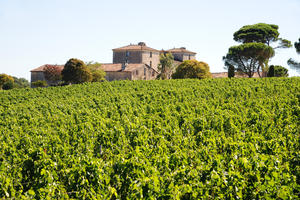
The vineyards of the Côtes are located on hillsides with mostly clay-limestone soils. An ideal terroir which allows the regions to benefit from strong sunshine, good run-off of rain and drainage of the soil, thereby facilitating the development of grapes with excellent concentration. All the regions are also on the banks of the Dordogne or the Garonne, proximity to water has long been associated with quality grape development.
The sub-appellations have much in common when it comes to terroir and so many assets that lead to high quality in the ripening of the grapes, which later reveals a better aromatic expression.
Around 10% of Bordeaux wines are from Côtes de Bordeaux: in 2020 the Côtes produced 419,000hl from 10,600ha under vine. The region counts 813 producers, 95% of which are family run estates, many of whom are young winemakers producing modern styles.
As one of the youngest appellations in the Bordeaux region, it is perhaps not unsurprising that the Côtes de Bordeaux is one of the drivers of modernisation. After all, it is home to many younger winemakers who, unincumbered by centuries of tradition, are willing to try something a little different.
The New Generation
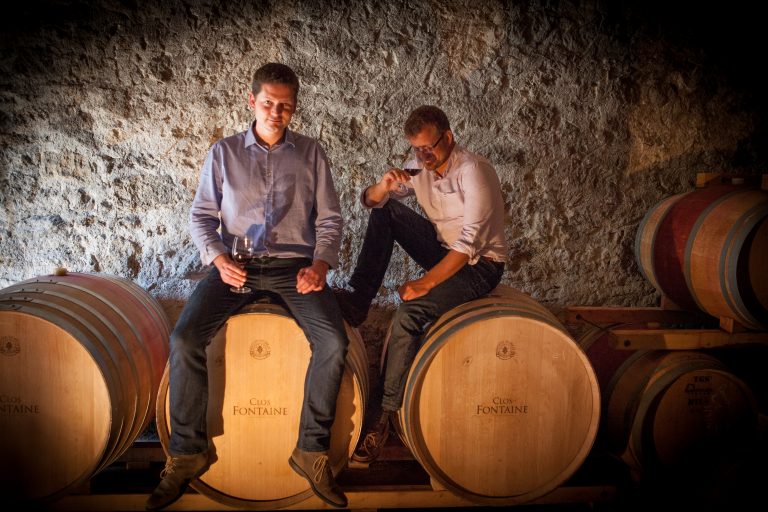
Florian Thienpont and his brother Jan, both in their 30s, are a prime example of young winemakers in the region who are challenging traditional approaches. Having taken over the management of Château Clos Fontaine, Francs Côtes de Bordeaux from their father in 2012, they have re-evaluated every aspect of the Château from winemaking to marketing; they even split production introducing a Grand Vin from the best Merlot plot with vines aged 60 years and a second wine made from the younger vines. Farmed without the use of chemicals or herbicides, the Thienponts aim for precision viticulture using technology to their advantage to assess water stress, disease pressure and analyse soils while also taking an uninvasive approach in the cellar, restricting the use of sulphur as much as possible and forgoing the use of new wood opting instead for barrels in their second occupancy. When asked about the philosophy behind his wines Florian notes: “It’s about simplicity and wine made naturally, we don't care about concentration, colour or tannins; we want to make wine for us to enjoy and for the future generation.”(Clos Fontaine, Francs Côtes de Bordeaux is available from Private Cellar for £17.90 a bottle).
Other Châteaux to discover - Château Haut-Rian (Cadillac Côtes de Bordeaux), Clos des Demoiselles (Castillon Côtes de Bordeaux)
Respect for the fruit
From fruit-forward reds made using shorter maceration periods and gentler extraction methods to terroir-driven wines made with minimal intervention in both the vineyards and cellars, winemakers across Côtes de Bordeaux are adopting sustainable practices and new techniques, working with historic varietals and using modern equipment more prolifically than many of their more established neighbours, and, as a result, they are putting Côtes de Bordeaux on the map.

At Château Picoron in Castillon their approach is distinct, producing organic, single varietal wines, which explore the true potential of Merlot. Winemakers Glenda and Frank Kalyk describe their portfolio as “transparent, terroir expressive and minimal intervention wines that reflect the past & future of Bordeaux.” Wines are vinified plot by plot, some producing only a few 1000 bottles, with each parcel treated uniquely, the result is a clean expression of terroir. Château Picoron has this year added 6 new wines to it is range which include a light fresh red made with carbonic maceration. The wines of Château Picoron are truly for the curious. (Château Picoron, Castillon Côtes de Bordeaux is available from Savage Vines for £24.95 a bottle.)
Other Châteaux to discover - Château Réaut (Cadillac Côtes de Bordeaux)
Environment first

Those familiar with modern Bordeaux will recognise the significance of environmental considerations to the region: indeed 75% of the Bordeaux vineyard holds some kind of accreditation, and the Côtes are no exception, with most châteaux committed to adopting practices throughout their respective businesses to regenerate their local environment and reduce their carbon footprint.
Although Valérie Labrousse-Marcuzzi, Operating Manager of Château du Payre Cadillac Côtes de Bordeaux, has explored innovative winemaking techniques and commercial activities around wine tourism, she believes the most significant change to the estate since her great-great grandmother opened its doors back in 1881 is its commitment to sustainability.
“Nowadays, environmental consideration touches every aspect of our business,” says Valérie. “We joined Terra Vitis in 2008 and since 2020, our entire vineyard has been in conversion to organic farming. To us, sustainability is so much more than what’s happening in the vineyard. We collect rainwater to clean the cellar floors and vineyard equipment, our packaging is made from recycled cardboard, our estate is powered by green energy, and all our purchases as well as our technical processes are designed to reduce the environmental impact on our products.” (Château du Payre, Cadillac Côtes de Bordeaux is available from Wine Society for £11.50 a bottle.)
Other Châteaux to discover - Château La Peyruche (Côtes de Bordeaux), Château Tour du Videau (Côtes de Bordeaux)
Commitment to quality
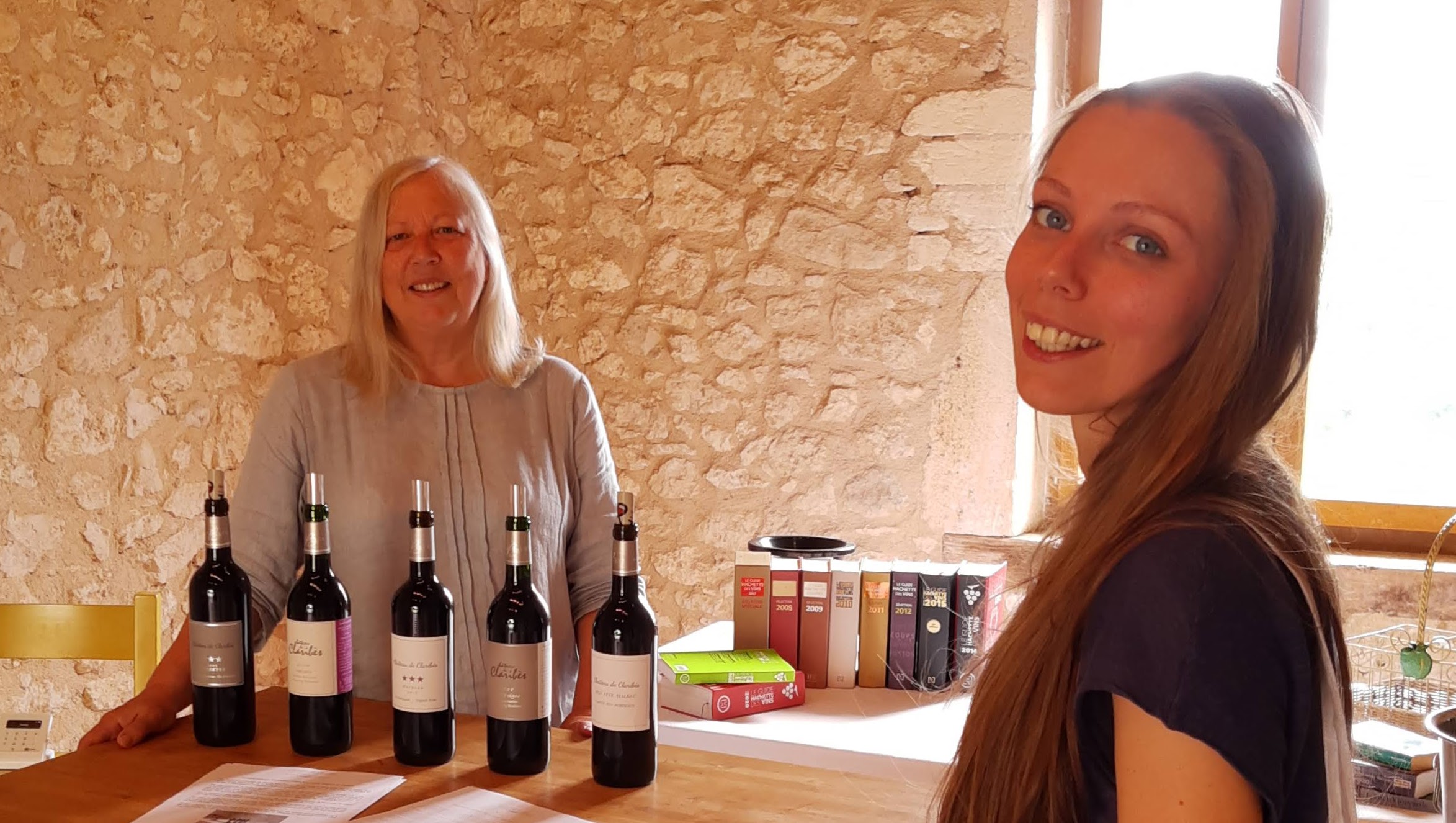
Whilst this integrated look at sustainable winemaking and regenerative vine growing is pervasive throughout all Côtes appellations with more and more growers espousing the benefits to both their vineyard and their wines, producing high quality wines remains of utmost importance.
Helen Kelly of Château de Claribès in Sainte-Foy who produces fruit-forward reds and elegant whites notes, says: “Just as in the vineyard, we make wines as naturally as possible with a focus on quality. They are a true reflection of the vines and the vineyards.” It is a philosophy that informs all decisions in the winemaking process, “the land and vineyards are officially classified organic. Much of the work in the vineyard is carried out by hand, organic fertilisers are used, indigenous plants are encouraged to grow between the rows of vines and the lunar cycle determines when we carry out key activities including the harvest.”
With all Côtes appellations producing organic wines at a higher percentage than the national average, Château de Claribès’ approach to sustainability is becoming the norm not the exception across this region. (Château de Claribès. Saint-Foy Côtes de Bordeaux is available direct from the Château at www.claribes.com)
Other Châteaux to discover - Château Sainte-Marie (Côtes de Bordeaux)
Wine Tourism

The Côtes share sunny hillsides and exceptional architectural and historical heritage, making them a particularly pleasant holiday destination. With citadelles, châteaux, romanesque churches and historical manor houses, the 5 regions present a rich past.
Like many new generation producers in Bordeaux, winemakers in the Côtes de Bordeaux have embraced the opportunity wine tourism affords to share their passion and wine with consumers and the trade alike, many of them adopting innovative events. In Blaye Côtes de Bordeaux, Château des Tourtes have been offering new ways to explore their wines since 1967. Through various workshops, visitors can discover the art of winemaking, tasting, and even jump into the oenologist’s seat to blend the wines. Mostly recently they have launched an electric bike & audio guide rental scheme so tourists can explore the vineyards on their own. (All Château des Tourtes wines are available from Bill’s Wine Connections.)
Other Châteaux to discover - Château Carbonneau (Sainte-Foy Côtes de Bordeaux)
The Côtes may be the youngest AOC in Bordeaux but it is an appellation building a reputation on great value wines, sustainably made from young energised winemakers unafraid to blaze their own trail.
If you would like to explore the wines of Côtes de Bordeaux further, sign up for a dedicated virtual trade training event on 19th October 2021 hosted by Bordeaux Tutor Russell Dent. You’ll taste an exciting selection of wines from each Côtes appellation and discover why this region is an epicentre of winemaking innovation. Click Here for more information.
